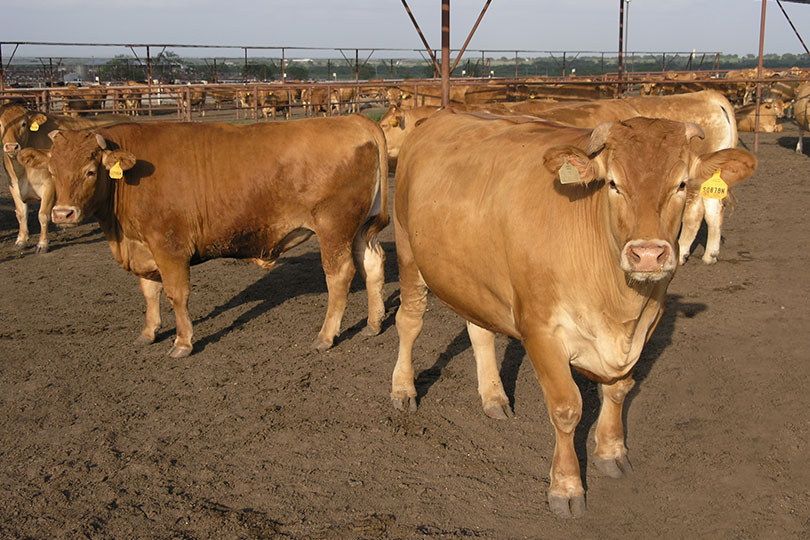By Shelby Shank
Field Editor
Bovine respiratory disease (BRD) is one of the largest health challenges for the fed cattle industry, but canines could potentially help by detecting the disease in cattle.
Dogs have been successfully used to sniff out human diseases like diabetes and panic attacks.
Dr. Courtney Daigle, animal welfare specialist at Texas A&M University, and a research team are working together to expand that success with training dogs to routinely and accurately detect BRD in cattle.
Daigle is working with BRD expert Dr. John Richeson from West Texas A&M University and dog training expert Dr. Nathan Hall from Texas Tech University.
The pilot study consisted of training two dogs over a period of seven months to discriminate between nasal swabs from feedlot cattle that developed signs of BRD within 20 days and swabs from cattle that did not develop BRD signs within three months at the feedlot. The pilot test helped the research team determine what training, equipment and other parameters are needed to increase the rate of accurate detection of the respiratory disease.
The research team is beginning the second study, using cattle from Texas A&M McGregor Research Center and guard dogs from the prison system in Huntsville.
Daigle indicates this technology could revolutionize how antimicrobial treatment is applied in commercial beef production. Feedyards could use the dogs chute-side for disease detection.
“We propose that appropriately trained dogs will accurately and rapidly predict BRD risk in individual cattle and communicate that information to humans in real time, resulting in a targeted approach to controlling BRD using antimicrobials,” Daigle said.
Treating only cattle the dogs indicate as sick would reduce drug administration to animals and drug costs for farmers and ranchers. This will demonstrate to consumers that the livestock industry is improving antimicrobial stewardship and promoting cattle welfare, while providing the global population with high-quality protein, AgriLife said.
“If these dogs can discriminate between samples from sick and healthy cattle under highly controlled conditions, then producers could have another tool in their cattle-management toolbox when it comes to detecting BRD,” Daigle said. “Also, these results may catalyze further research that could examine what compounds are responsible for those scent differences, leading to the development of sensors for BRD.”

